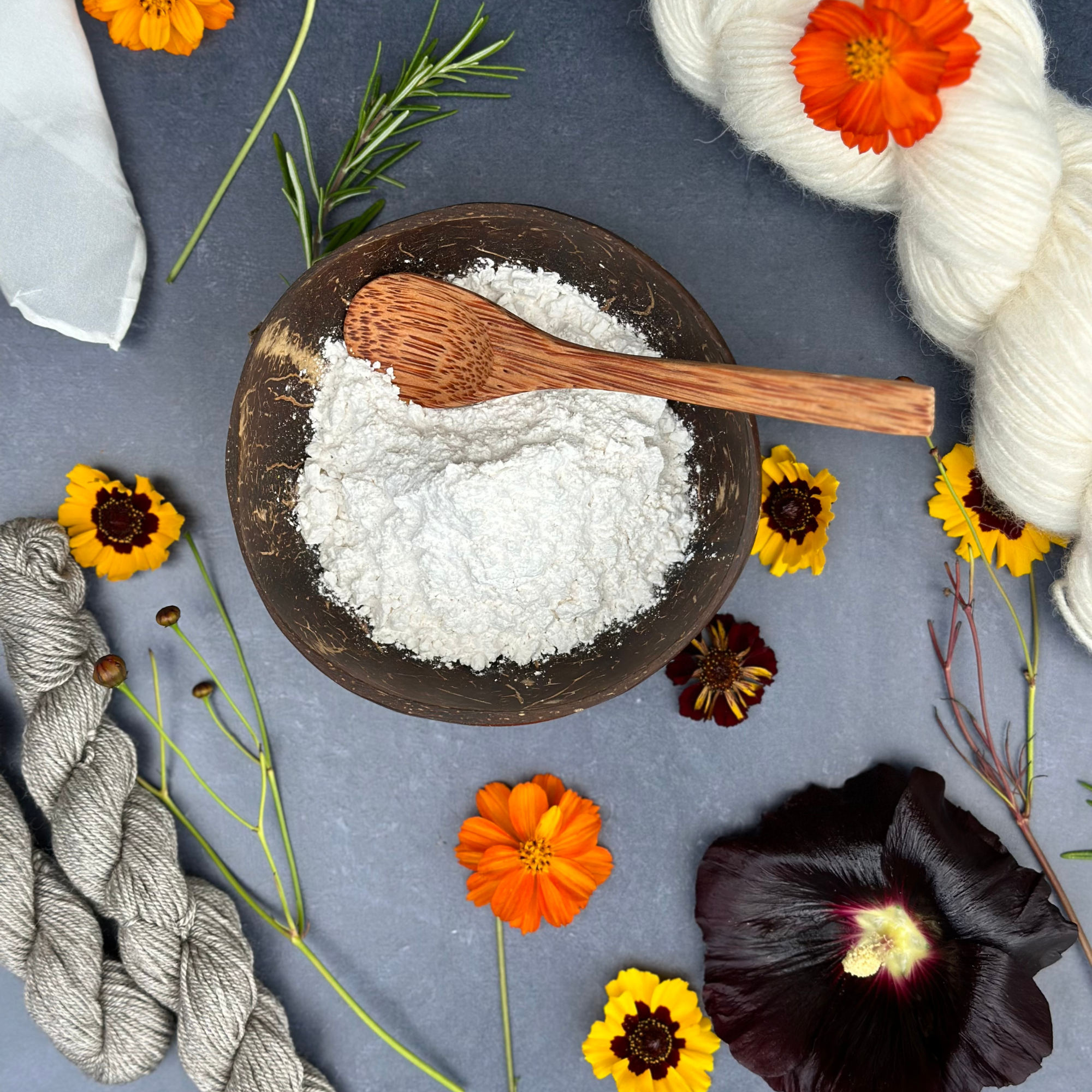The Importance of Scouring and Mordanting in Natural Dyeing: Your Guide to Vibrant, Long-Lasting Colours
When it comes to natural dyeing, achieving rich, vibrant colours isn’t just about the dye itself – it starts with careful preparation. Two of the most essential steps for ensuring the success of your dye projects are scouring and mordanting. If you’ve ever wondered why your colours aren’t as bold as you expected or why they fade quickly, chances are these steps were skipped or not done thoroughly.
In this blog post, we’ll explain why scouring and mordanting are critical to your natural dyeing process and offer some tips to get the best results. We’ll also share how you can streamline your workflow with our pre-mordanted textiles and yarn, as well as dive deeper into the topic with our new Scouring & Mordanting for Natural Dyeing e-book.
What is Scouring?
Scouring is the process of cleaning your fibres before dyeing. Even though new yarns or fabrics may look clean, they’re often coated in natural oils, waxes, or spinning lubricants that can prevent dyes from bonding properly. Scouring removes these impurities, ensuring that your fibres can absorb the dye evenly and deeply.
Why Is Scouring Important?
Cleaner fibres absorb dye better: Unscoured fibres can lead to patchy or uneven colour results.
Improves the longevity of the dye: Colours will be more vibrant and last longer when applied to well-scoured fibres.
Prevents blotchiness: Skipping this step can leave some areas of the fibre unreceptive to dye, resulting in streaks or spots.
Scouring is a simple process, but it does require attention to detail. For plant fibres (like cotton and linen), you’ll want to use a mild detergent and heat to thoroughly clean the material. For animal fibres (like wool and silk), gentler methods are needed to avoid felting or damage.
What is Mordanting?
After scouring, mordanting is the next crucial step. A mordant is a substance that helps bind the natural dye to the fibre, creating a stronger bond between the two. Without this step, many natural dyes will fade quickly, or the colour may wash out entirely.
Some of the most common mordants include alum, iron, and tannins. Each type of mordant can affect the final colour of your project, and combining mordants can offer even more variation in your results.
Why Is Mordanting Essential?
Fixes the dye to the fibre: Without a mordant, many natural dyes simply won’t stick, resulting in dull or faded colours.
Helps achieve vibrant colours: Proper mordanting enhances the richness and depth of your dye colours, making them more vibrant and striking.
Improves wash and light fastness: Mordanting ensures your colours withstand washing and exposure to light, preventing them from fading too quickly.
Dive Deeper with Our New E-Book
If you’re ready to learn more about these essential steps and want to perfect your process, we’ve got something special for you! Our new Scouring & Mordanting for Natural Dyeing e-book is packed with detailed instructions, tips, and techniques to help you get the most out of your fibres and dyes.
Here’s what’s inside:
Step-by-step guides for scouring and mordanting different types of fibres
How to choose the right mordant for your dye project
Methods for ensuring even and consistent colour results
Plus, expert tips from our years of natural dyeing experience
Our e-book is designed for both beginners and experienced dyers, providing you with all the information you need to achieve stunning, lasting colours. Whether you’re new to natural dyeing or looking to refine your skills, this resource is a must-have.
✨ Ready to take your dyeing to the next level? Grab your copy of our e-book here and unlock the secrets to beautifully vibrant, long-lasting colours.
In Summary
Scouring and mordanting may seem like tedious steps, but they are the foundation for creating bold, beautiful, and long-lasting natural colours. By properly preparing your fibres, you ensure that all your hard work dyeing leads to stunning results. And for those of you looking to save time or simplify your process, we’ve got you covered with pre-mordanted materials and our comprehensive e-book.
Thank you for reading! If you have any questions or want to share your own natural dyeing experiences, drop us a comment below or connect with us on social media.











